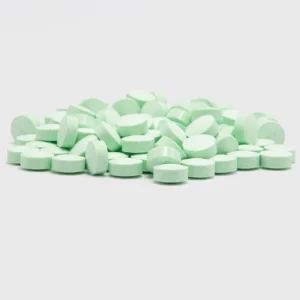!!! 1S-LSD Ban comes Soon – Next Date 21.11.25 !!!
Envío gratuito a partir de 100
!!! 1S-LSD Ban comes Soon – Next Date 21.11.25 !!!
Envío gratuito a partir de 100
Ingrediente activo: 1SB-LSD L-tartrate (160 mcg).
Otros ingredientes: Tinta a base de soja, papel secante de 200 g/m².
Apariencia: Papel secante perforado de 9×9 mm con impresión "1D-LSD".
Condiciones de almacenamiento: En caso de almacenamiento a corto o medio plazo, guárdelo protegido de la luz solar directa. Para almacenamiento a largo plazo, guárdelo en un recipiente seco, oscuro y sellado, como una bolsa con cierre de cremallera guardada en un cajón.
Caducidad: Al menos varios años si se almacena correctamente.
Purity (1SB-LSD L-tartrate): >99%
Meet 1SB-LSD, our latest evolution in the world of legal lysergamides — and the perfect counterpart to 1S-LSD.
Both are designed for educational and analytical purposes only, not for in-vivo experimentation.
Explore our Educational Area for updates on safer use, legal status, and other psychedelic insights.
A blotter is our term for a paper sheet infused with lysergamide — in this case 1SB-LSD or 1S-LSD.
Each blotter carries 150 µg of our latest legal LSD derivative, produced with precision and purity in mind.
1S-LSD (1-Trimethylsilyl-propionyl-lysergic acid diethylamide hemi-D-tartrate) was one of the first legal analogues of LSD,
known for its clean, balanced pharmacological profile and its role as a direct prodrug of LSD.
1SB-LSD (1-Phenylsilyl-1-4-trimethylsilylbenzoyl lysergic acid diethylamide hemi-D-tartrate), on the other hand, is its newer legal successor — featuring a slightly modified molecular structure that makes it legally distinct yet functionally comparable.
While both act as LSD prodrugs, users and researchers often describe 1SB-LSD as offering greater stability, longer shelf life, and more consistent results in laboratory settings.
A prodrug is a molecule that itself shows little to no activity until it’s metabolically converted into an active compound— in this case, LSD.
1S-LSD, 1B-LSD, 1cP-LSD, and now 1SB-LSD all belong to this family of LSD prodrugs, meaning they transform into LSD in vivo under specific conditions.
When it comes to microdosing, both 1S-LSD and 1SB-LSD are favored for their clarity, subtlety, and precision.
Although molecular weights differ slightly, the subjective distinctions are often minimal —
yet 1SB-LSD may provide a smoother onset y longer analytical window, making it increasingly popular for research and comparative analysis.
Our products are not intended for human consumption y should not be used in vivo.
They are sold strictly for laboratory, educational, or analytical purposes.
| Quantity | 1x, 2x, 5x, 10x, 15x, 25x, 50x, 75x, 100x, 250x, 500x, 1000x |
|---|

40,00 € – 3.840,00 €Price range: 40,00 € through 3.840,00 €